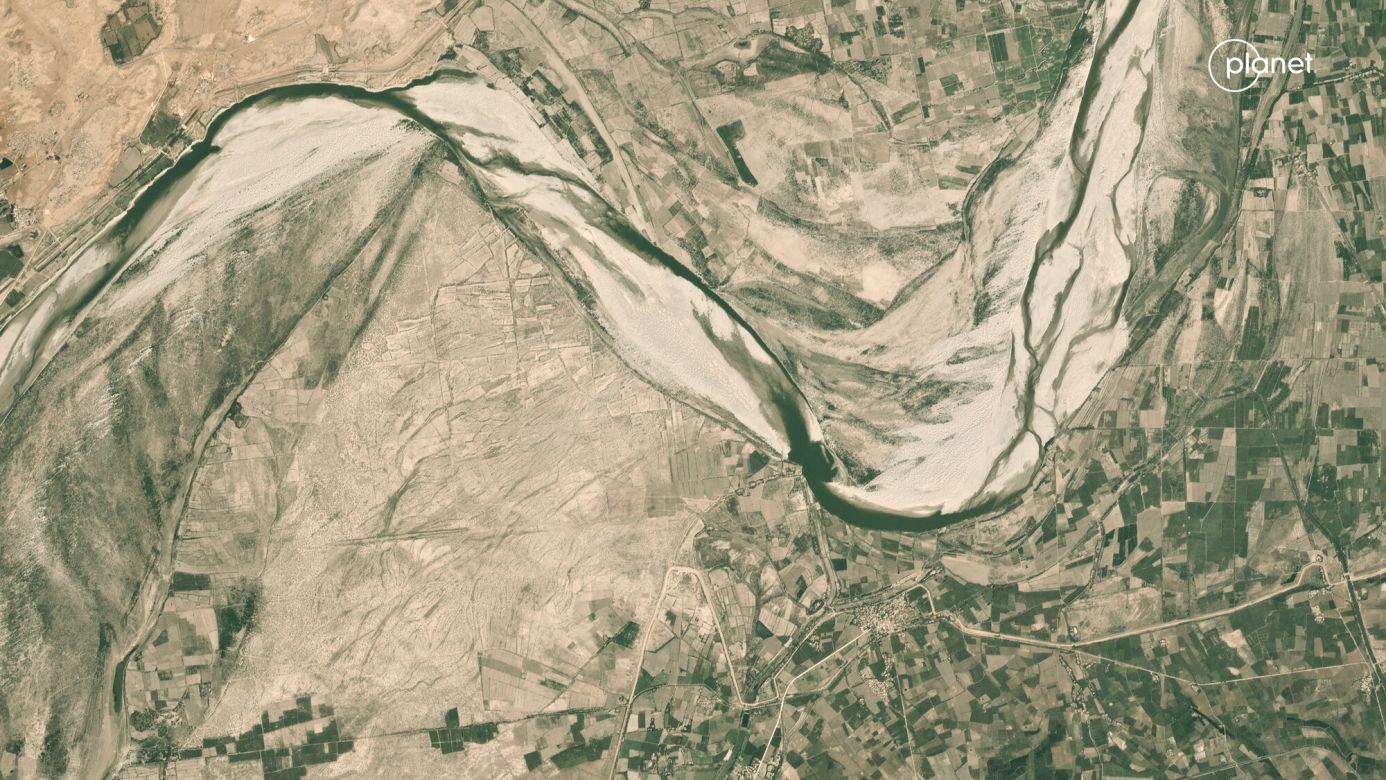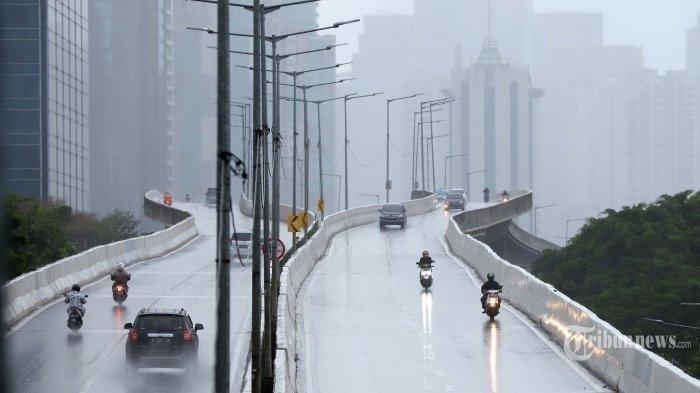Report Exposes Dangerous Climate Whiplash And Its Urban Consequences

Table of Contents
Understanding Climate Whiplash and its Mechanisms
Climate whiplash refers to the rapid and unpredictable transitions between contrasting extreme weather events. This isn't simply a matter of hotter summers and colder winters; it's a far more complex and dangerous phenomenon driven by a confluence of factors. The scientific basis lies in the disruption of established atmospheric circulation patterns, exacerbated by climate change. These disruptions lead to unpredictable weather systems, bringing about sudden and intense shifts between, for example, prolonged droughts and torrential downpours, or extreme heatwaves followed by unexpectedly harsh cold snaps.
- Increased frequency of extreme weather events: Climate change is intensifying both the frequency and severity of extreme weather.
- Disruption of established weather patterns: The jet stream, for instance, is becoming more erratic, leading to unpredictable weather patterns.
- Impact of feedback loops: Melting permafrost releases methane, a potent greenhouse gas, accelerating climate change and creating a vicious cycle.
- Role of greenhouse gas emissions: Human activity, primarily the emission of greenhouse gases, is the primary driver of this instability and increased climate whiplash occurrences.
Urban Vulnerability to Climate Whiplash
Urban environments are particularly vulnerable to the impacts of climate whiplash. Their high population density concentrates people in areas at risk from extreme weather events. Furthermore, the built environment exacerbates these risks.
- Concentrated populations in vulnerable areas: Cities often develop in low-lying areas or floodplains, making them highly susceptible to flooding.
- Limited green spaces leading to increased heat stress: The urban heat island effect, caused by the abundance of concrete and asphalt, amplifies the impact of heatwaves, making them even more dangerous.
- Overburdened infrastructure during extreme weather: Drainage systems, transportation networks, and energy grids are frequently overwhelmed during extreme events.
- Social inequities exacerbating the impact of climate whiplash: Vulnerable populations, including the poor and marginalized, often bear the brunt of the impacts, lacking the resources to adapt or recover. This amplifies existing social inequalities, making recovery longer and more difficult.
Case Studies: Cities Facing Climate Whiplash
Numerous cities around the globe are already experiencing the devastating effects of climate whiplash. For example, [City A] suffered record-breaking heatwaves followed by severe flooding within a single year, causing widespread damage to infrastructure and displacement of residents. Similarly, [City B] experienced a prolonged drought leading to water shortages, immediately followed by intense rainfall and significant flooding, resulting in immense economic losses and health crises. (Include maps and charts illustrating the impact on these cities.)
The Economic and Social Costs of Climate Whiplash
The economic and social costs associated with climate whiplash are substantial and far-reaching. The damage extends beyond immediate repair costs; it includes long-term impacts on public health, economic productivity, and social stability.
- Increased insurance premiums: The increasing frequency of extreme events leads to higher insurance costs for both individuals and businesses.
- Disruption of supply chains: Extreme weather events can disrupt transportation networks, leading to shortages of essential goods and services.
- Loss of livelihoods: Farmers, businesses, and individuals can lose their livelihoods due to damage caused by extreme weather events.
- Increased healthcare demands: Heatwaves, floods, and other extreme events can lead to increased hospitalizations and healthcare costs.
- Mental health impacts of repeated extreme events: The constant threat and experience of extreme weather events can have significant impacts on mental health.
Mitigation and Adaptation Strategies for Urban Areas
Addressing the challenges posed by climate whiplash requires a two-pronged approach: mitigation and adaptation. Mitigation focuses on reducing greenhouse gas emissions to slow climate change, while adaptation focuses on building resilience to the impacts of climate change that are already occurring.
- Investing in green infrastructure (parks, green roofs): Green infrastructure can help mitigate the urban heat island effect and improve water management.
- Improving drainage systems and flood defenses: Investing in resilient infrastructure is crucial for protecting cities from flooding.
- Developing early warning systems for extreme weather: Early warning systems can give people time to prepare for and evacuate during extreme weather events.
- Implementing sustainable urban planning policies: Sustainable urban planning can help reduce the vulnerability of cities to climate change.
- Strengthening community resilience and preparedness: Empowering communities to prepare for and respond to extreme weather events is essential.
Conclusion
This report underscores the severe and growing threat of climate whiplash and its devastating impact on urban populations. The economic and social costs are substantial, demanding immediate action. Understanding the dangers of climate whiplash is the first step towards building resilient cities. We must act now to mitigate climate change and adapt to the inevitable impacts of climate whiplash, embracing sustainable practices and investing in resilient infrastructure. Learn more about how you can contribute to mitigating climate change and adapting to the inevitable impacts of climate whiplash by visiting [link to relevant resource 1] and [link to relevant resource 2]. Let's work together to build a more sustainable and resilient future for our cities.

Featured Posts
-
 Jadwal Kapal Pelni Km Lambelu Juni 2025 Nunukan Makassar
May 28, 2025
Jadwal Kapal Pelni Km Lambelu Juni 2025 Nunukan Makassar
May 28, 2025 -
 Al Nassr Cristiano Ronaldo Ile 2 Yil Daha Anlasti
May 28, 2025
Al Nassr Cristiano Ronaldo Ile 2 Yil Daha Anlasti
May 28, 2025 -
 Jawa Timur Dilanda Hujan Petir Peringatan Cuaca 29 Maret 2024
May 28, 2025
Jawa Timur Dilanda Hujan Petir Peringatan Cuaca 29 Maret 2024
May 28, 2025 -
 Comparatif Prix Samsung Galaxy S25 256 Go Meilleure Offre
May 28, 2025
Comparatif Prix Samsung Galaxy S25 256 Go Meilleure Offre
May 28, 2025 -
 Galaxy S25 Ultra 256 Go Le Meilleur Smartphone Haut De Gamme
May 28, 2025
Galaxy S25 Ultra 256 Go Le Meilleur Smartphone Haut De Gamme
May 28, 2025
